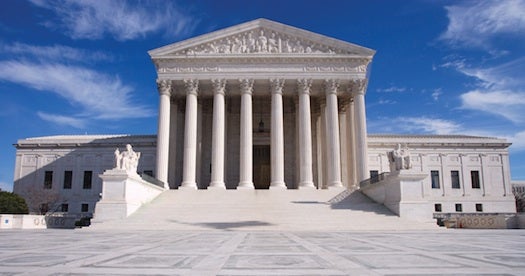Q&A: John Calvert Of The U.S. Patent And Trademark Office
How to protect big ideas in a new legal era

The America Invents Act went into full effect in March, overhauling the U.S. patent system while launching programs designed to help independent inventors. Associate patent commissioner John Calvert explains what to look for in a new legal era for innovation.
Have independent inventors changed over time?
Big business has become very prolific in filing applications, but back in the 1900s, we had a lot of small companies filing. I think we’ve started to move back in that direction. I really think we’re going to see an upturn in the number of applications from micro-entities, small inventors, small businesses, and so forth because of growth in entrepreneurism.
What do you credit that growth of entrepreneurism to?
A lot of it is an outgrowth of what’s happening in Silicon Valley. There’s also been a huge push in entrepreneurism at some of the universities—University of California, Berkeley, and MIT come to mind. And I see a real groundswell at universities teaching more entrepreneurism, not only as part of business programs, but also engineering programs.
How does the America Invents Act help small-time entrepreneurs?
Section 28 started an ombudsman program to offer assistance before, during, and after an applicant gets to the patent office. Section 32 says the patent office must encourage property-law associations to form pro bono programs to assist financially under-resourced inventors and small businesses. Right now, we have four up and running: in Minnesota, Colorado, the D.C. metropolitan area, and California.
Both sections 28 and 32 are already up and running?
They actually came into existence at the time the bill was signed, so September 16, 2011. We were charged with doing both of those immediately, and that’s what we’ve been doing.
How does the new first-to-file application system affect inventors?
It’s really not a huge change from what we were doing. A lot of people don’t realize that if two inventors come into the office at the same time, in at least 75 percent of the cases, the first to file would get the patent.
But will this create a huge rush to file?
I don’t think so. Most people need to be diligent anyway. But you ought to file as soon as you can and before you disclose. If you don’t file before you disclose, you risk losing your patent rights.
Some inventors work collaboratively through hackerspaces now. Will first-to-file increase the risk of someone stealing their ideas?
The law says first inventor to file. Say I am working with Joe Smith and I disclose my invention, and he runs to the patent office. Is he the inventor? No. I can file a petition for derivation and prove that I actually invented it. I have the right to patent it because I’m technically the first inventor to file. So there is that protection in the law, and it’s new.
What advice do you have for inventors using the updated patent system?
We’re working diligently to get more information on our website, on YouTube, and other places to help inventors easily navigate through our system. We have a set of videos and short PowerPoint presentations we’re about to launch on first to file. We’re trying to make things short and in an animated space so that people can take it and learn it quickly but then have an opportunity to do more in-depth training.
Any important trend in patenting that people should know about?
I think 3-D printing is going to have a significant impact on copyright infringement. What happens when somebody starts making iPhones with a 3-D printer? What you can do with that technology is fascinating.
John Calvert is the acting associate commissioner for innovation development at the U.S. Patent and Trademark Office.